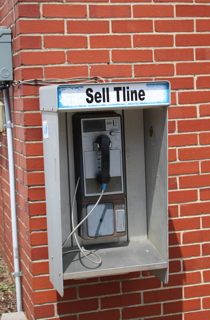Traveling across some of the more rural parts of America has given me a healthy dose of reality when it comes to national coverage of U.S. mobile carriers. Driving in sparsely populated parts of Kansas, West Virginia, and Kentucky, I couldn’t help but wonder what I would do if my car broke down because, at times, all four networks failed me.
The dream of a truly national network has been around since Craig McCaw started buying up rural licenses back in the early eighties and launched McCaw Cellular. Roughly 35 years later, the networks are all pretty good in terms of their national footprints, but no single one of them has coverage everywhere. I carried prepaid phones from all four networks on this trip and most of the time at least one of them promised a signal of some sort.
Most surprising for me, was how well Sprint’s signal held up while driving through the Appalachian Mountains in West Virginia. My historical perception of the network was shaken as the Boost Mobile phone held its signal long after the others dropped. Ironically, that’s not the message that Sprint is positing about its network in light of the proposed merger with T-Mobile, but don’t worry, the network was more spotty in other rural markets. Conversely, Verizon had a significant gap in service crossing the mountain range (these are prepaid services, so the signal may be better on postpaid). Of course, very few people live in these parts of the country, which means that the lack of a signal does not impact the classic claims of all carriers: that they cover a certain percent of the population. But that is hardly reassuring while driving across an empty landscape: it would be a long walk to help if there’s no signal.

A landline backup is still useful in Davis, WV
In small West Virginian towns, the locals have clear opinions regarding which carriers are worth the investment. The owner of a local restaurant in Davis, WV, was adamant that the only carriers worthy of choice were AT&T or US Cellular, but even then, there were compromises to be made. As she put it, US Cellular offered the best local coverage, but if you travelled to other parts of the state the service let you down. AT&T, on the other hand, was a much better option if you needed to travel, but – depending where in Davis you lived – meant making calls from your porch, not inside the house. T-Mobile was not mentioned – for good or bad – but that may have a lot to do with the fact that the nearest carrier store is over 100 miles away, making it a less visible solution to the local community. This was ironic as the carrier’s network held up well in the Davis area.
Beyond the fundamental binary of signal or no signal, there is the question of network type. In many rural areas – particularly in parts of Kansas – I often found myself on a 3G network. Nine years after carriers began the 4G network rollout it has still not reached parts of the U.S. This made me wonder about carrier plans to deploy 5G as an alternative broadband-to-the-home solution in rural markets. As with all other broadband services, I suspect that “rural” will be defined by a reasonable population size, rather than addressing the need of the more sparsely population areas. Conversely, the frequencies being deployed for 5G – particularly the 600 MHz bands – means that rural coverage should be better, so perhaps these markets will eventually benefit from faster data and, more importantly, a signal in more places.
Eddie is currently driving through the “fly over” states of America, looking at the current, and potential, impact of technology including broadband adoption, consumer electronics, video consumption and mobile. The results of this investigation will be published in the upcoming Technology in Rural America Report.